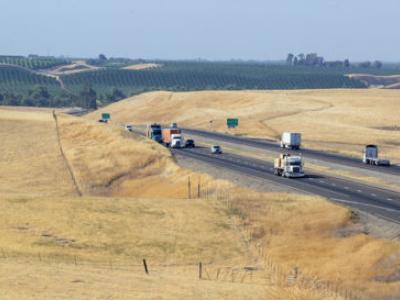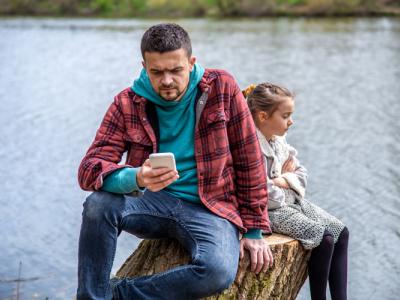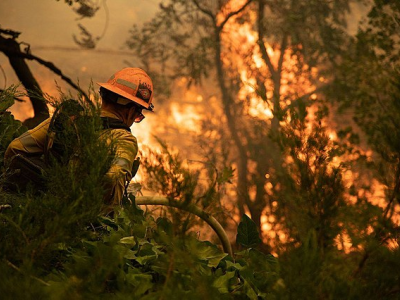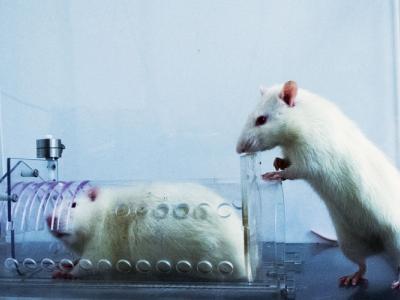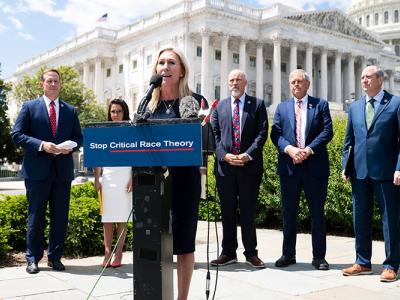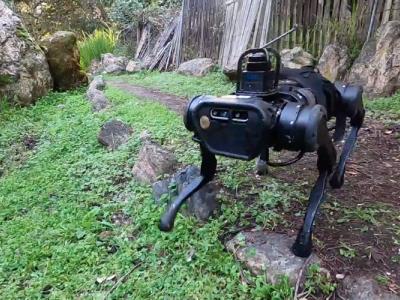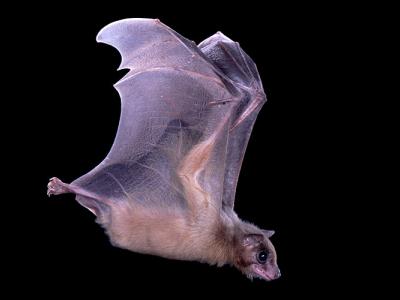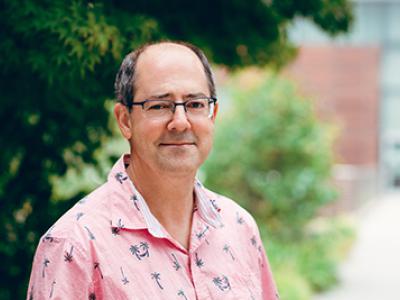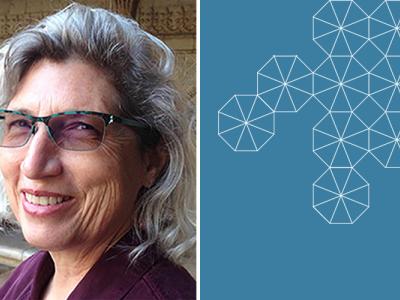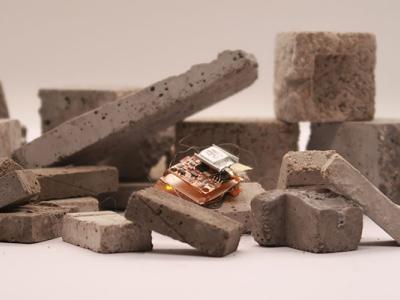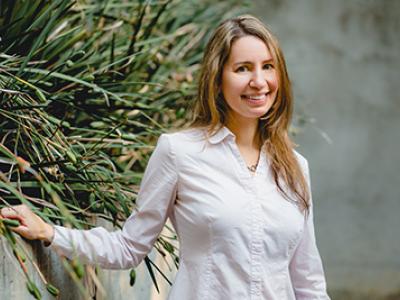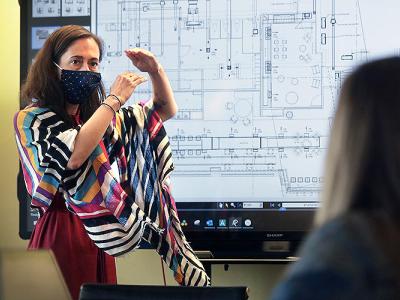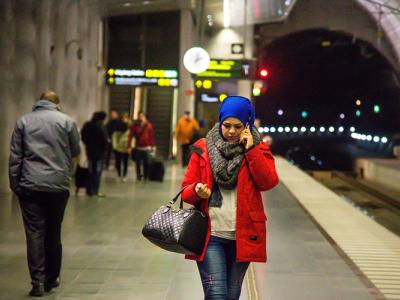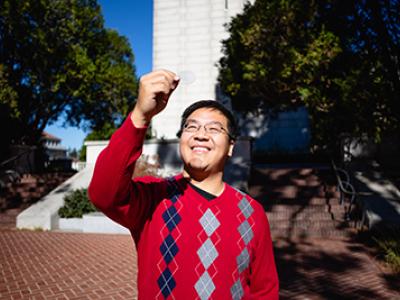Four UC Berkeley research entities have received research awards from California 100, an ambitious statewide initiative to envision and shape the long-term success of the state. The awards, along with technical assistance from the Institute For The Future, will enable the Berkeley Institute for Young Americans, the Center for Environmental Public Policy, the Graduate School of Education and the Terner Center for Housing Innovation to evaluate current facts, origins and future trends in issues critical to California’s next century.
Research News
Learn more about UC Berkeley's researchers and innovators.
Showing 1025 - 1040 of 3512 Results
Three decades ago, child development researchers found that low-income children heard tens of millions fewer words in their homes than their more affluent peers by the time they reached kindergarten. This “word gap” was and continues to be linked to a socioeconomic disparity in academic achievement.
Our understanding, planning, and response to wildfires benefit from connections with data and computing sciences. Recent developments in machine learning and simulations can help first responders detect fires earlier, predict fires’ paths and limit blazes quickly. Through collaborations with practitioners in other fields like microbiology and forest management, these tools are answering previously intractable questions about fires that can inform policy and practice.
Magnetars are bizarre objects — massive, spinning neutron stars with magnetic fields among the most powerful known, capable of shooting off brief bursts of radio waves so bright they’re visible across the universe. A team of astrophysicists has now found another peculiarity of magnetars: They can emit bursts of low energy gamma rays in a pattern never before seen in any other astronomical object.
A decade after scientists discovered that lab rats will rescue a fellow rat in distress, but not a rat they consider an outsider, new UC Berkeley research pinpoints the brain regions that drive rats to prioritize their nearest and dearest in times of crisis. It also suggests humans may share the same neural bias.
Late last year, after the police murder of George Floyd, the right-wing mediasphere began to turn its attention to a scholarly field little known outside of law schools and other academic outposts: critical race theory. Following the victory of Democrats Joe Biden and Kamala Harris, the blast furnaces of conservative strategic communication have transformed critical race theory into something law professor Khiara M. Bridges doesn’t recognize.
Delivery services may be able to overcome snow, rain, heat and the gloom of night, but a new class of legged robots is not far behind. Artificial intelligence algorithms developed by a team of researchers from UC Berkeley, Facebook and Carnegie Mellon University are equipping legged robots with an enhanced ability to adapt to and navigate unfamiliar terrain in real time.
When driving up to a busy intersection, you probably pay more attention to where you will be in the near future than where you are at that moment. After all, knowing when you will arrive at the intersection — and whether you need to stop or slow down to avoid a collision with a passing car, pedestrian or cyclist — is usually much more important than knowing your current location.
This ability to focus on where we will be in the near future — rather than where we are in the present — may be a key characteristic of the mammalian brain’s built-in navigation system, suggests a new study appearing online Thursday, July 8, in the journal Science.
Kristofer Pister leads research to embed microbatteries directly into sensor circuitry, providing a built-in power source instead of an external one. The technology could shrink circuit boards to make the sensor, microprocessor and battery all one unit that can speak to the internet.
Technology had been evolving steadily, and the millennial generation was already emerging as a powerful influence in the American knowledge workforce. But since the COVID-19 pandemic hit, American businesses have been forced to adapt or face disaster.
In episode 118 of Berkeley Talks, Linda Rugg, associate vice chancellor for research at UC Berkeley, discusses the measures being taken to repatriate Native American ancestral remains and sacred artifacts held by the university.
Many insects and spiders get their uncanny ability to scurry up walls and walk upside down on ceilings with the help of specialized sticky footpads that allow them to adhere to surfaces in places where no human would dare to go.
Engineers at the University of California, Berkeley, have used the principle behind these some of these footpads, called electrostatic adhesion, to create an insect-scale robot that can swerve and pivot with the agility of a cheetah, giving it the ability to traverse complex terrain and quickly avoid unexpected obstacles.
Maria Paz Gutierrez has begun to explore the potential of using lichens rather than plants as living air purifiers, and installing them along interior walls, rather than exterior walls. With support from the Bakar Fellowship Program, Dr. Gutierrez aims to fabricate small-scale “lichen building blocks” and test their capacity to purify indoor air. She describes her unorthodox approach and what drew her to it.
Going to work used to be so simple. Across a span of decades, in organizations large and small, American white-collar workers by the millions would wake up in the morning and get to the office by 8 or 9. They would leave at 5 or 6, perhaps later if they were on deadline with an important project. It was like clockwork.
Suddenly, however, that model seems outdated, if not archaic. In a series of interviews, Berkeley scholars who study work and management say that as the COVID-19 pandemic eases, American executives and office workers are emerging into a new and unfamiliar world that may have broad benefits for both.
For more than a decade, Joel Moskowitz, a researcher in the School of Public Health at UC Berkeley and director of Berkeley’s Center for Family and Community Health, has been on a quest to prove that radiation from cellphones is unsafe. But, he said, most people don’t want to hear it.
Bakar Fellow Norman Yao, Assistant Professor of Physics, has overcome conventional limitations with the invention of the NV-DAC, which directly integrates a thin layer of NV center sensors into a diamond anvil tip. With this invention, Yao and his group have been able to obtain highly sensitive and localized DAC measurements of a sample material’s properties under enormous pressure over a wide range of temperatures.

